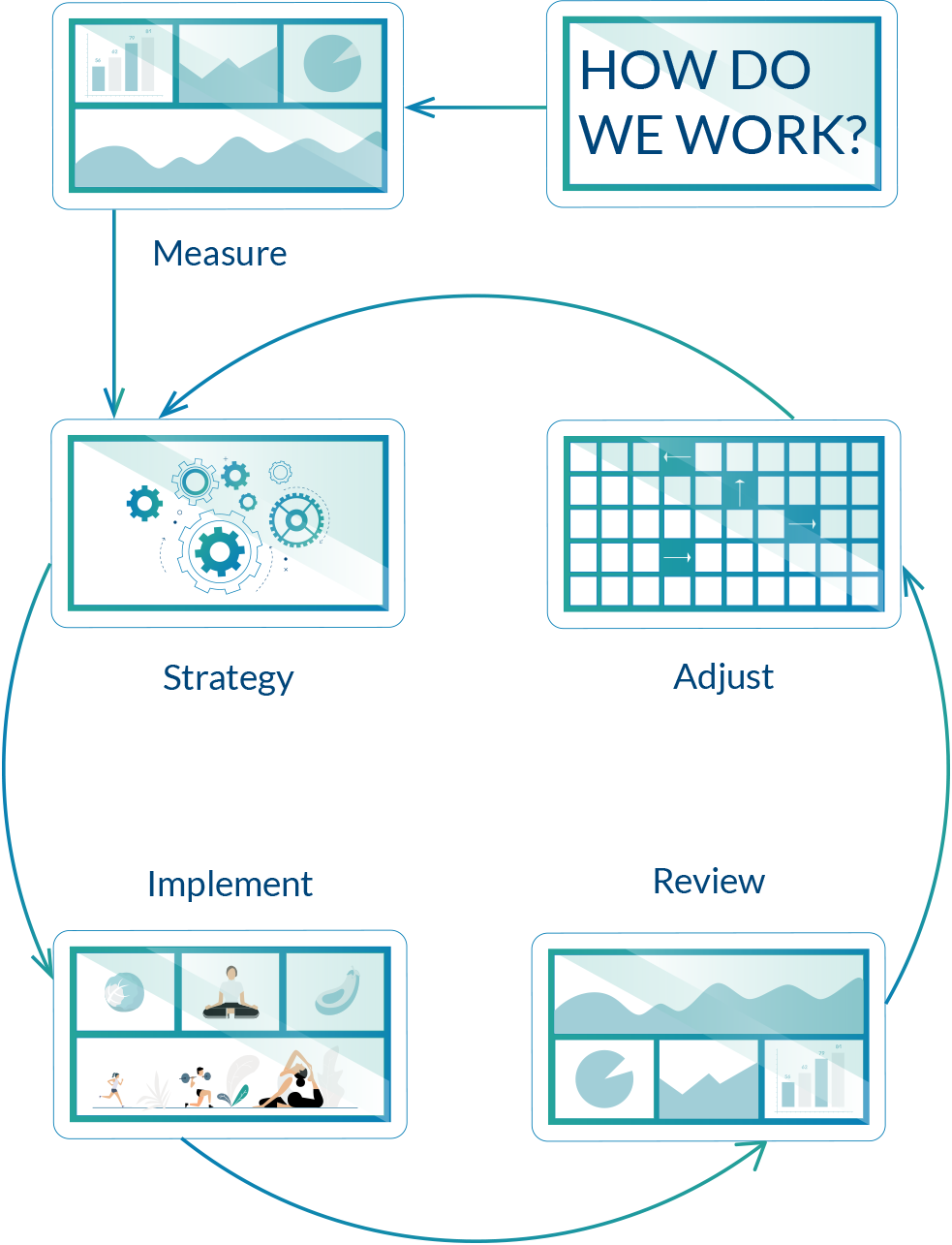Workplace wellness and corporate wellness are typical umbrella terms used to describe the programmes, benefits, policies and activities that organisations provide to their employees to improve their wellbeing and overall health & safety.
It’s broad, I know. To break it down a little more, let’s just concentrate on corporate wellness programmes. Fundamentally, they are put in place to help employees with their overall health and prevent bad habits from impacting that health. Four important areas that wellness programmes focus on and succeed with are:
1. Research. Wellness programmes are most effective when they are built around research carried out before a programme is implemented within a company. Employees will all have different wellbeing issues, so therefore an off the shelf programme will not be effective and generate the results that leaders and employees of organisations are looking for.
2. Awareness. Implementing a workplace wellness programme requires a certain amount of information that needs to be communicated to employees. They may simply need to know the reason there is a programmes in the first place, how to they get the most out of a programme or simply learn that their employer cares about their wellbeing inside and out of the workplace. Without this awareness, the buy in from staff is much more difficult. Workshops and training are great ways to initially engage a workforce in programmes.
3. Activity. Participation in programmes is a challenge for any company. Employees want to be physically and mentally well, so that’s a nice start. Now how do you help them towards those wellness goals? Incorporating healthy and fun activities into aspects of the programmes is essential. Whether it’s using gamification to motivate employees to walk more or educating them on nutrition or mental health through workshops, there are great initiatives that companies can use to get buy in from staff. We explore these further in the strategy section.
4. Results. Workplace wellness is a tough one to measure. It’s not as simple as measuring the ROI of a marketing or sales department but it is quite clear when looked at closely. We can all safely say, workplace wellness is fundamentally a good thing. But why is that? Well, it prevents and improves. It helps prevent employees from experiencing burnout, thus improving productivity. It helps prevent employees from leaving your organisation in search of those with wellness programmes, thus improving retention. It helps prevent employees from succumbing to bad habits with their diet or mental health, thus improving their overall wellbeing in and outside of work. We will cover this further in the benefits section where we will bring in some of the research conducted.














